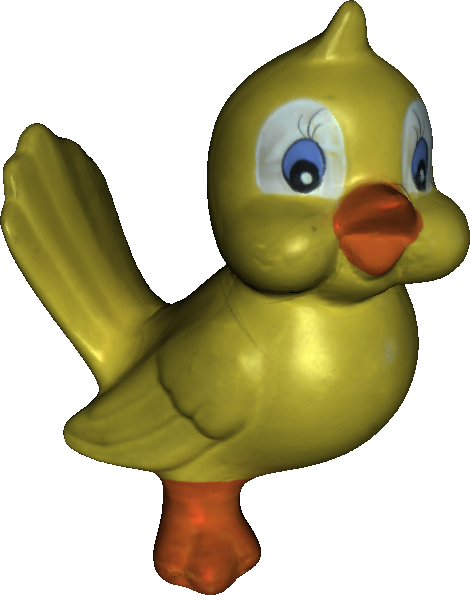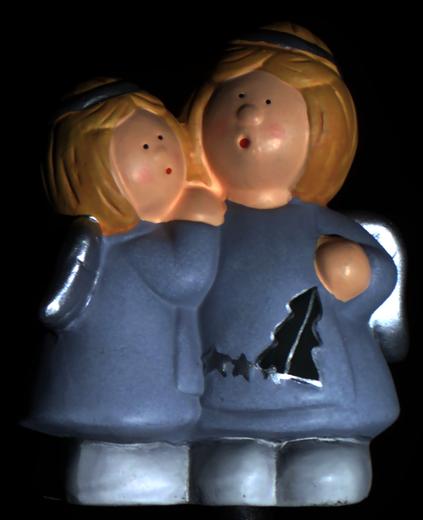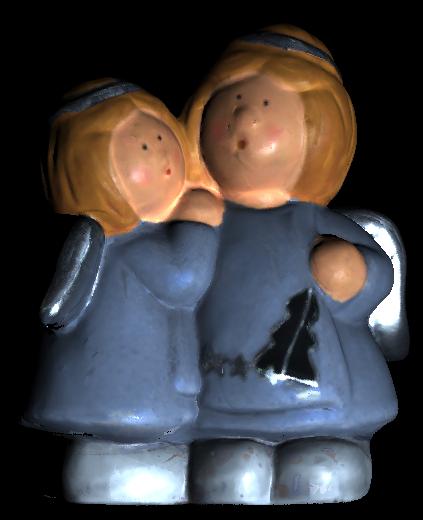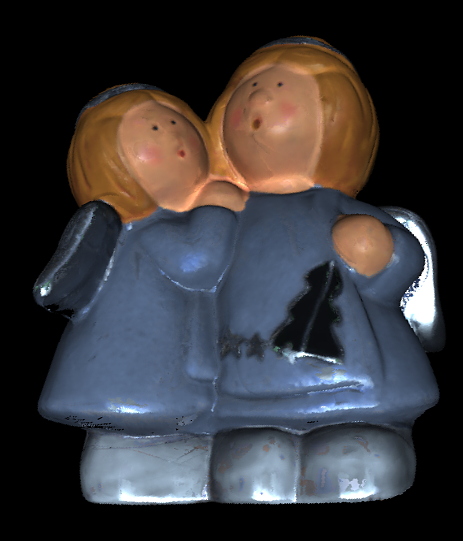Image-Based Reconstruction of Spatially Varying Materials (BRDFs)
- Abstract
- Data Acquisition
- Clustering of Materials
- Spatially Varying Materials
- Pictures
- Movies
- Literature
Abstract
The use of realistic models for all components of images synthesis is
a fundamental prerequisite for photorealistic rendering. The
generation of these models in a manual process often becomes
infeasible as the demand for visual complexity increases steadily. In
this sketch we concentrate on the acquisition of realistic materials.
In particular, we describe an acquisition method for shift-variant
BRDFs, i.e., a specific BRDF for each surface point.
Data Acquisition
We acquire the geometry of the object
by use of a 3D scanner, e.g. a structured light or computer
tomography scanner, yielding a triangular mesh. In order to capture
the reflection properties we take a relatively small number (around
20) of high-dynamic range (HDR) images of the object, lit by a
point-light source. We recover the camera position and orientation
as well as the light source position relative to the geometric model
for all images.
For every point on the object's surface we collect all available data
from the different views in a data structure called {\it lumitexel}. It
contains the position of the surface point, its normal, and a list of
radiance samples together with their viewing and lighting directions.
Clustering of Materials
Since a single lumitexel does not carry enough information to reliably
fit a BRDF model to the radiance samples, we first determine clusters
of lumitexels belonging to similar materials. Starting with a single
cluster containing all lumitexels, the parameters of an average BRDF
are fitted using the Levenberg-Marquardt algorithm.
From this, two new sets of parameters are generated by varying the
fitted parameters along the direction of maximum variance, yielding
two slightly separated BRDFs.
The lumitexels of the original cluster are then assigned to the
nearest of these BRDFs, forming two new clusters. A stable separation
of the materials in the clusters is obtained by repeatedly fitting
BRDFs to the two clusters and redistributing the original lumitexels.
Further splitting isolates the different materials until the number of
clusters matches the number of materials of the object as illustrated
in the following figure.
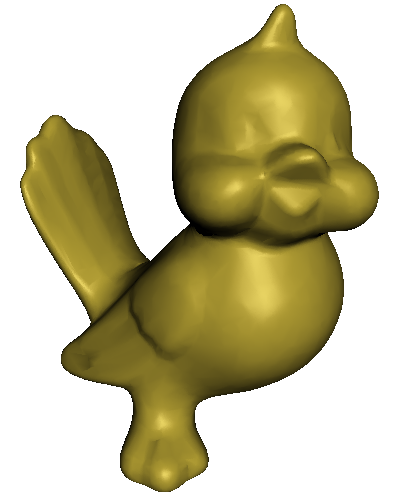
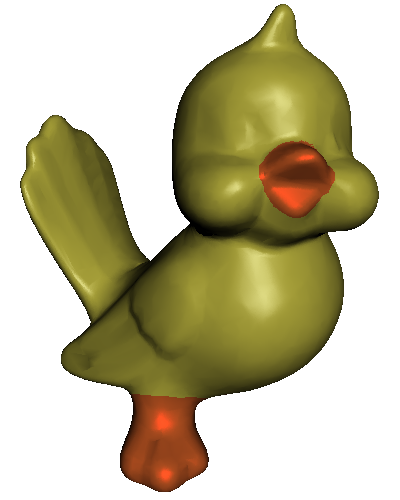
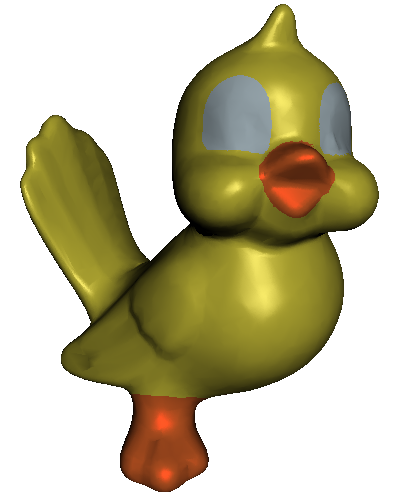
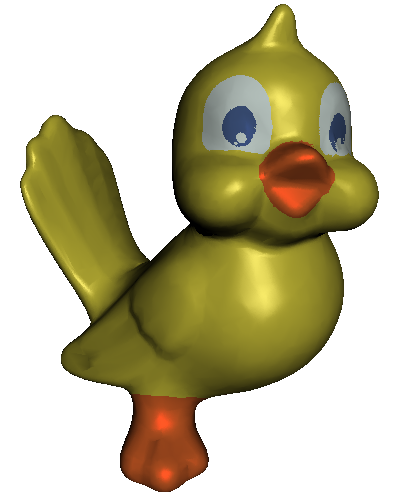
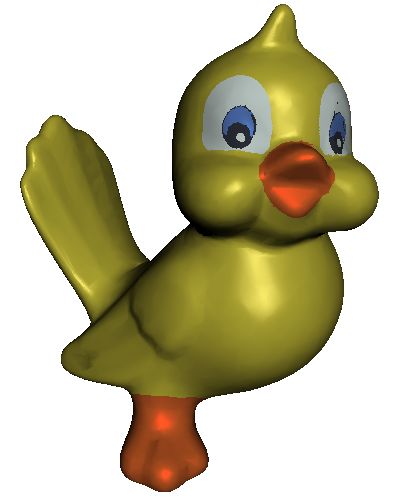
The clustering process at work. In every image a
new cluster was created.
The object was reshaded using the BRDF that
was fitted to each cluster.
Spatially Varying Materials
After the clustering we still have the same reflection behavior
assigned to all lumitexels in one cluster. However, small features on
the surface and smooth transition between materials can only be
represented if every lumitexel is assigned its own BRDF.
In our algorithm, this BRDF is a linear combination of the BRDFs
recovered by the clustering procedure. This can be represented by a
set of basis BRDFs for the entire model plus a set of weighting
coefficients for each lumitexel. An optimal set of weighting
coefficients minimizes the error between the measured radiance and
the weighted radiance values obtained by evaluating the basis BRDFs
for the specific viewing and lighting directions. To recover the
coefficients we compute the least square solution of the
corresponding system of equations using singular value
decomposition.
This method allows for accurately shaded, photorealistic rendering of
complex solid objects from new viewpoints under arbitrary lighting
conditions with relatively small acquisition effort.
Here some pictures
BirdModel
Left: Last result of the clustering step. Right: Bird with the spatially varying BRDF determined by projecting each lumitexel into a basis of BRDFs.
Note the subtle changes of the materials making the object look
realistic.
Angel Model
Left side: Photograph of model. Right side: Model with acquired BRDF rendered from the same view with similar lighting direction. The
difference in the hair region is due to missing detail in the
triangle mesh.
Bust Model
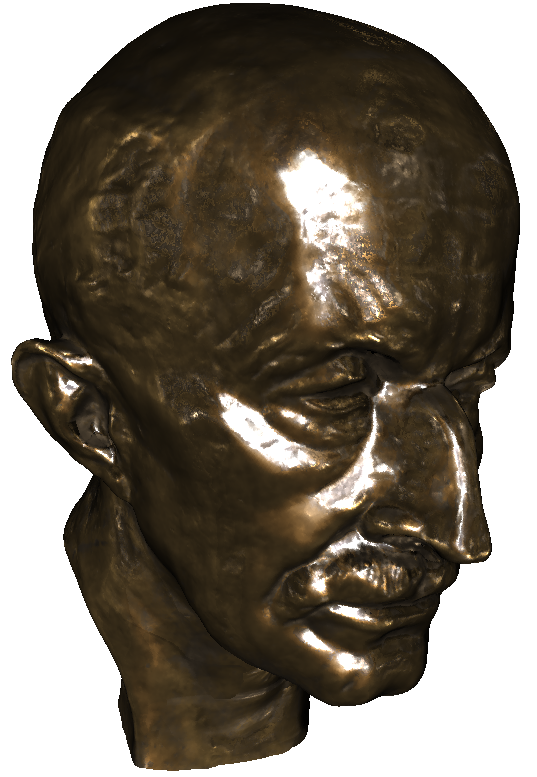
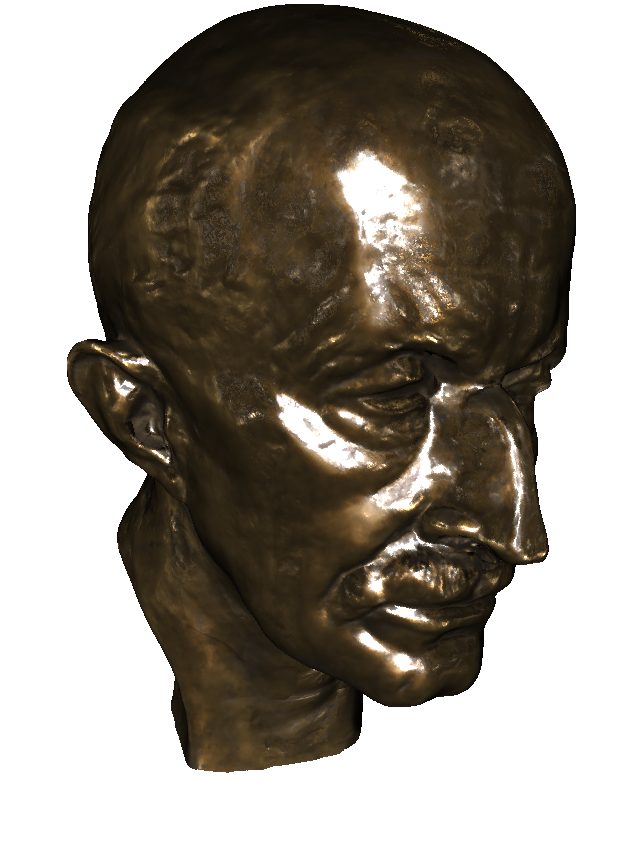

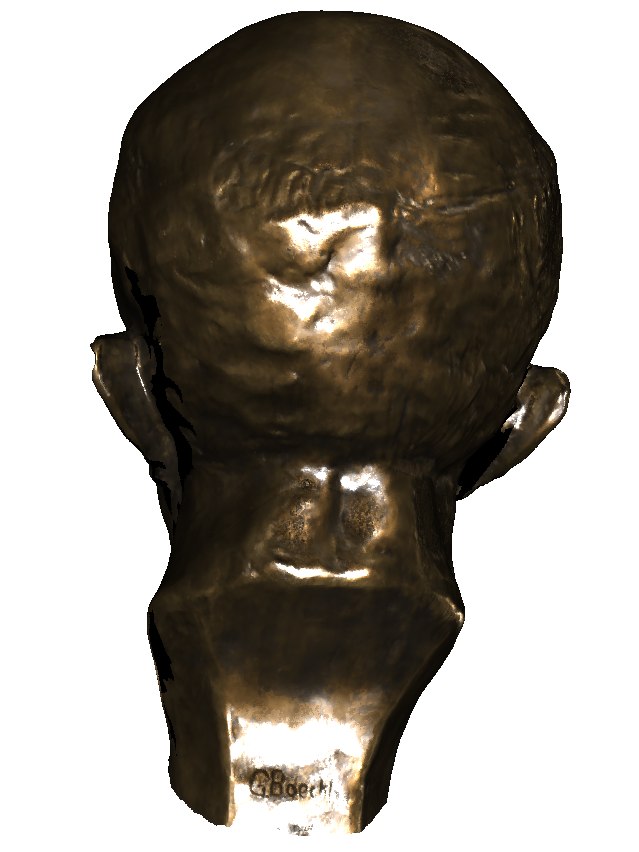
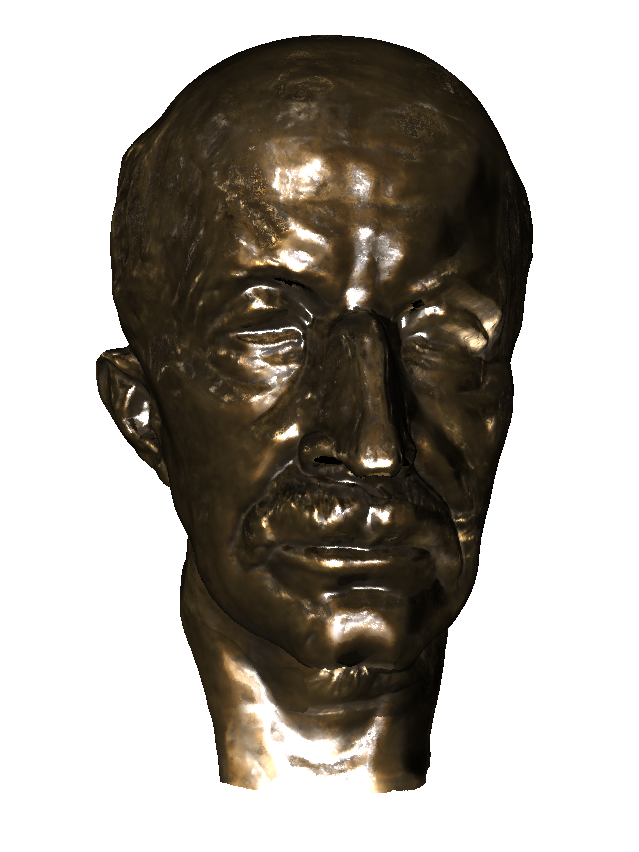
A bronze bust rendered with a shift-variant BRDF, which
was acquired with our reconstruction method.
Here some movies
Klick on the images to view the movies.
Literature
Hendrik P. A. Lensch, Jan Kautz, Michael Goesele, Wolfgang Heidrich, and Hans-Peter Seidel.
Image-Based Reconstruction of Spatially Varying Materials. In Rendering Techniques '01 (Proceedings of Eurographics Rendering Workshop), (accepted for publication).
Last modified: Thu Aug 26 14:13:11 PDT 2004 by
ypcat: can't get local yp domain: Local domain name not set











